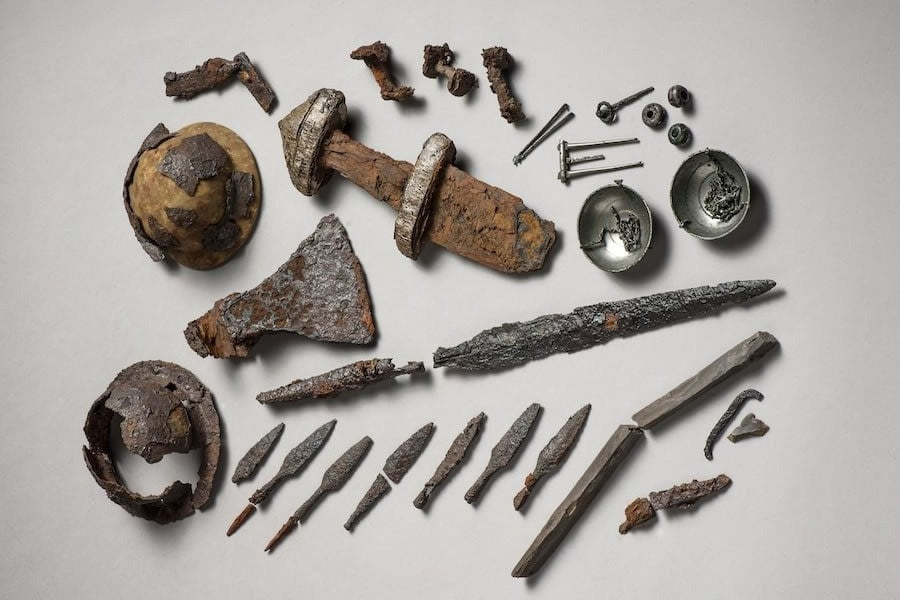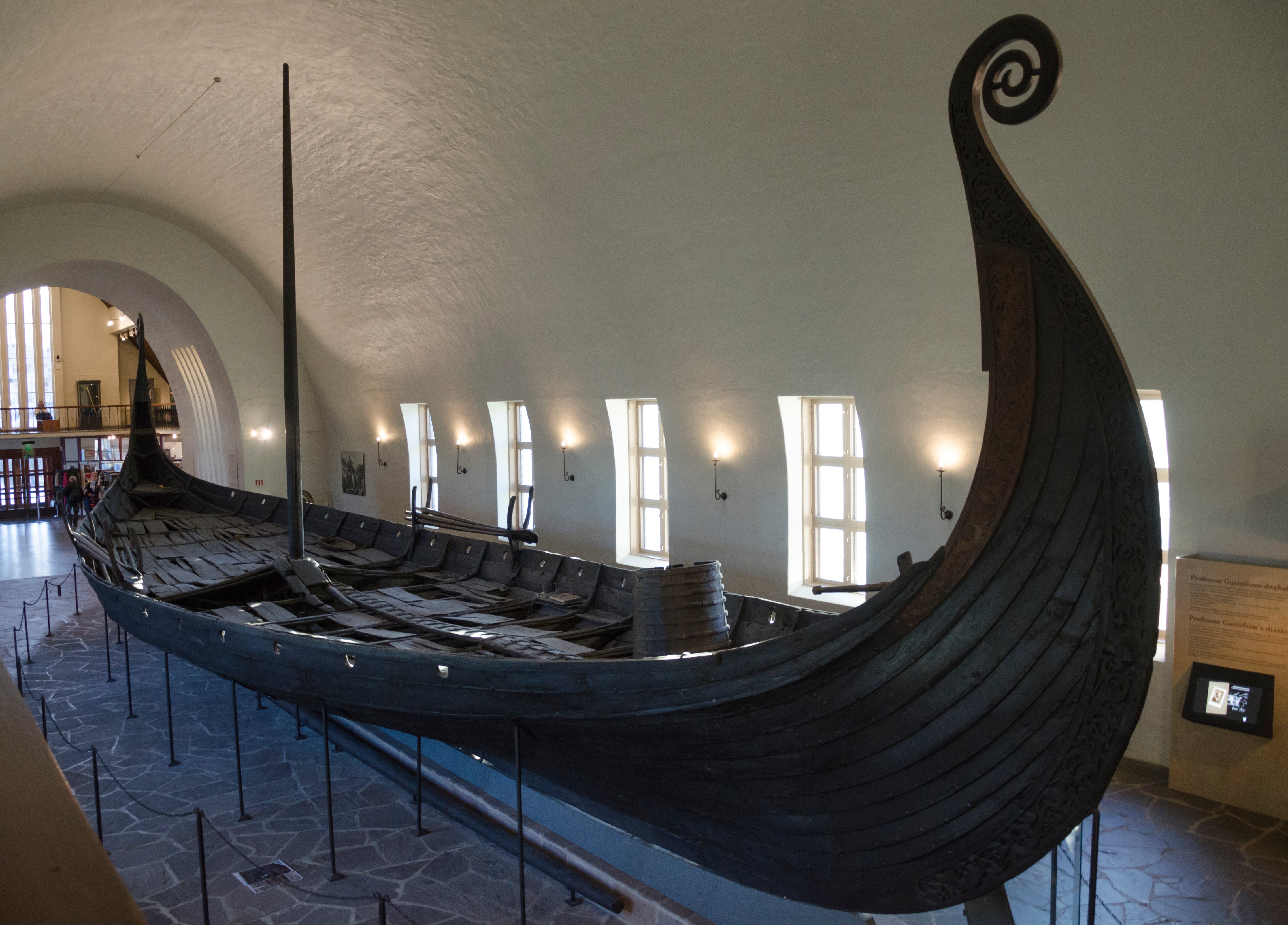
Steinkjer, Norway: Uncovering Artifacts from Viking Ship Burial
The Vikings, famed for their seafaring prowess and rich cultural heritage, continue to captivate us with each archaeological discovery. Among the most intriguing finds are Viking ship burials, where the deceased were laid to rest in grand vessels, accompanied by treasures befitting their status. One such remarkable discovery took place in Steinkjer, Norway, unearthing a trove of artifacts that shed light on Viking customs and craftsmanship.
History of Viking Ship Burials

Excavation of the Oseberg Ship burial mound in Norway. (Public Domain)
Viking ship burials date back over a thousand years and hold immense significance in Norse culture. Originating in Scandinavia, these burials were reserved for individuals of high rank, believed to ensure a prosperous afterlife. Archaeologists have unearthed similar sites across Europe, revealing the extent of Viking influence during the medieval period.
Discovery in Steinkjer
The discovery in Steinkjer, Norway, represents a pivotal moment in archaeological exploration, unveiling a treasure trove of historical significance. In 2019, amidst the tranquil landscapes of this central Norwegian municipality, archaeologists embarked on an excavation that would redefine our understanding of Viking history. As layers of earth were meticulously removed, the remnants of a Viking ship burial emerged from beneath the soil, shrouded in mystery and intrigue. This remarkable find ignited a wave of excitement among scholars and enthusiasts worldwide, eager to unravel the secrets hidden within this ancient vessel.
Nestled within a mound overlooking the majestic fjords, the site of the excavation provided a picturesque backdrop to the unfolding discovery. Steinkjer's geographical location, with its proximity to waterways and coastal regions, underscored the region's rich maritime history and its intimate connection to Viking seafaring. Against this backdrop, the excavation offered a window into Norway's past, shedding light on the seafaring prowess and cultural legacy of the Vikings.
Description of Artifacts

Artifacts from viking's ship burial in Steinkjer, Norway
The excavation in Steinkjer, Norway, unearthed a remarkable array of artifacts that offer a captivating glimpse into Viking culture and craftsmanship. Within the confines of the ship's burial chamber, archaeologists discovered a diverse assortment of objects, each with its own story to tell. Among these treasures were weapons, tools, jewelry, and everyday items, carefully preserved over centuries within the protective confines of the vessel.
One of the most striking finds was the intricately carved rune stones, adorned with Norse symbols and inscriptions that speak to the spiritual beliefs and communication methods of the Vikings. These stones served as both decorative pieces and functional tools, providing insights into the linguistic and cultural practices of the time.
Additionally, the discovery of ornate brooches and jewelry highlights the Vikings' penchant for adornment and self-expression. These artifacts, crafted with meticulous attention to detail, showcase the skill and artistry of Viking artisans, whose craftsmanship rivaled that of their contemporaries.
Furthermore, the presence of exquisitely crafted weaponry underscores the militaristic nature of Norse society during the Viking Age, where warfare played a central role in politics, trade, and territorial expansion. From swords to spears, each weapon tells a story of conquest and valor, offering a glimpse into the martial prowess of these seafaring warriors.
Viking Culture and Belief
To understand the significance of these artifacts, we must delve into Viking culture and beliefs. The Vikings held a deep reverence for the sea and viewed death as a transformative journey to the afterlife. Ship burials symbolized their belief in an afterlife at sea, where the deceased embarked on a final voyage to join their ancestors in Valhalla, the mythical hall of fallen warriors.
Ship Design and Construction

Rivets and pieces of wood belonging to the ship. Image by Geir Grønnesby
Central to Viking ship burials is the design and construction of these vessels. Renowned for their advanced shipbuilding techniques, the Vikings crafted sleek, seaworthy vessels capable of traversing vast distances. The burial ship found in Steinkjer exemplifies this mastery, showcasing the intricate interlocking of wooden planks and the skillful use of iron rivets.
Cultural Significance of Artifacts
The artifacts unearthed in Steinkjer offer invaluable insights into Viking society, from social hierarchies to religious practices. The presence of ceremonial objects and personal belongings underscores the importance of these rituals in commemorating the deceased and honoring their legacy. Comparisons with similar burials across Scandinavia further enrich our understanding of Viking customs and traditions.
Preservation Efforts
Preserving these artifacts poses significant challenges, given their delicate nature and susceptibility to degradation. Archaeologists employ various techniques, including chemical stabilization and climate-controlled storage, to prevent deterioration and ensure their long-term conservation. These efforts are vital in safeguarding our cultural heritage for future generations.
Public Interest and Education
The discovery has sparked widespread interest among the public, with local communities actively engaging in educational initiatives and guided tours of the excavation site. Such outreach efforts not only foster a deeper appreciation for Viking history but also encourage stewardship of archaeological sites and artifacts.
Future Research and Discoveries
The Steinkjer excavation represents just a fraction of what lies beneath the surface, fueling anticipation for future discoveries in the region. Advances in archaeological technology, such as ground-penetrating radar and 3D scanning, promise to unveil new insights into Viking civilization and its enduring legacy.
Tourism and Cultural Heritage
The allure of Viking history has transformed Steinkjer into a cultural hub, attracting tourists from around the globe eager to explore its archaeological wonders. Balancing preservation with accessibility is paramount, ensuring that these sites remain open to the public while safeguarding their integrity for years to come.
Global Significance
Beyond Norway's borders, the Steinkjer discovery holds global significance, contributing to our understanding of Viking history and its impact on European civilization. Scholars and enthusiasts alike marvel at the wealth of information gleaned from these artifacts, further cementing the Old Norse's place in world history.
Legacy of the Vikings
In closing, the artifacts from Steinkjer serve as a poignant reminder of the enduring legacy of the Vikings. Their seafaring exploits, cultural innovations, and rich mythology continue to inspire us centuries later, reminding us of the resilience and ingenuity of humanity in the face of adversity.
References
"Lindholm Hoje Viking burial with burial stones in shape of a Viking ship." by denisbin is licensed under CC BY-ND 2.0.








